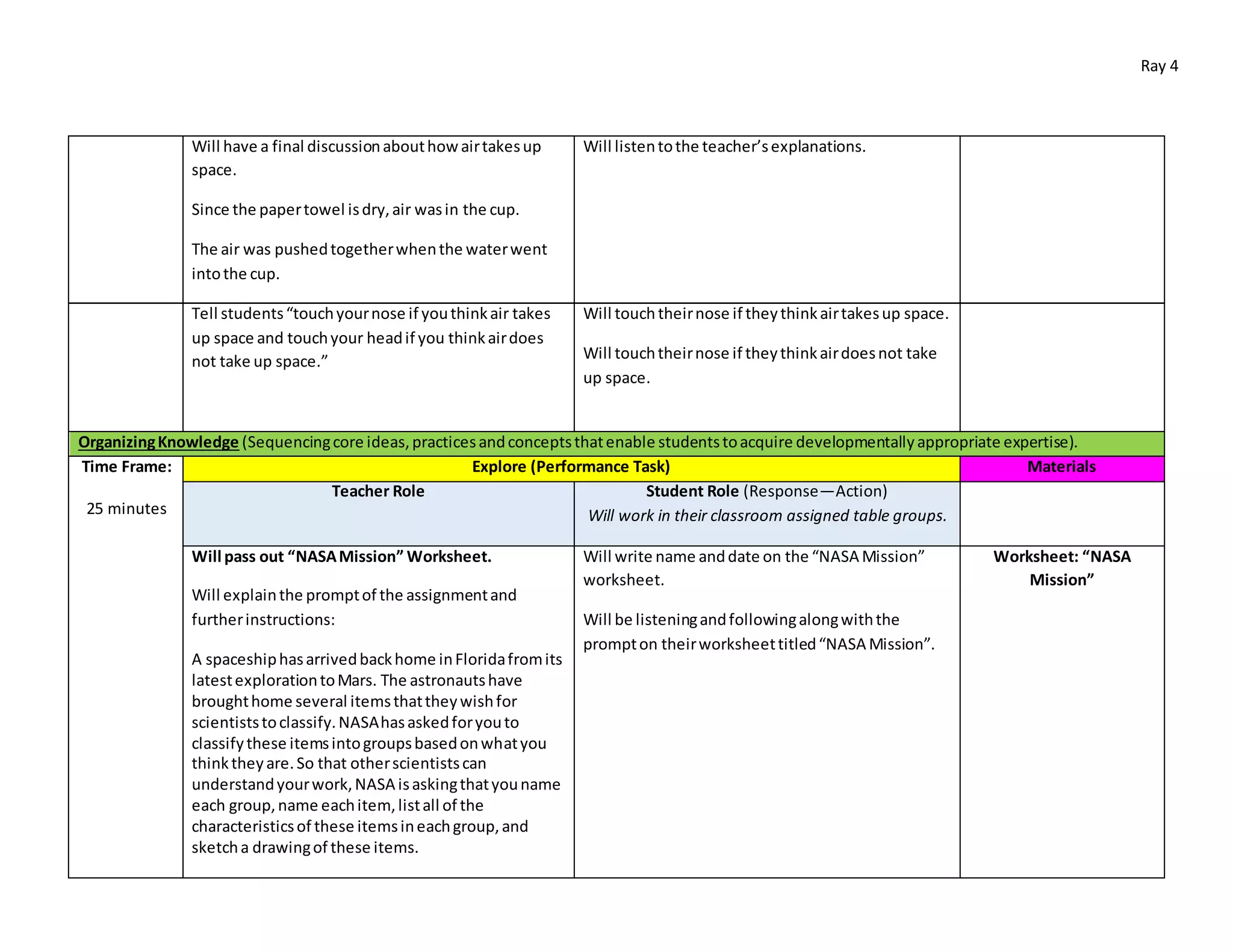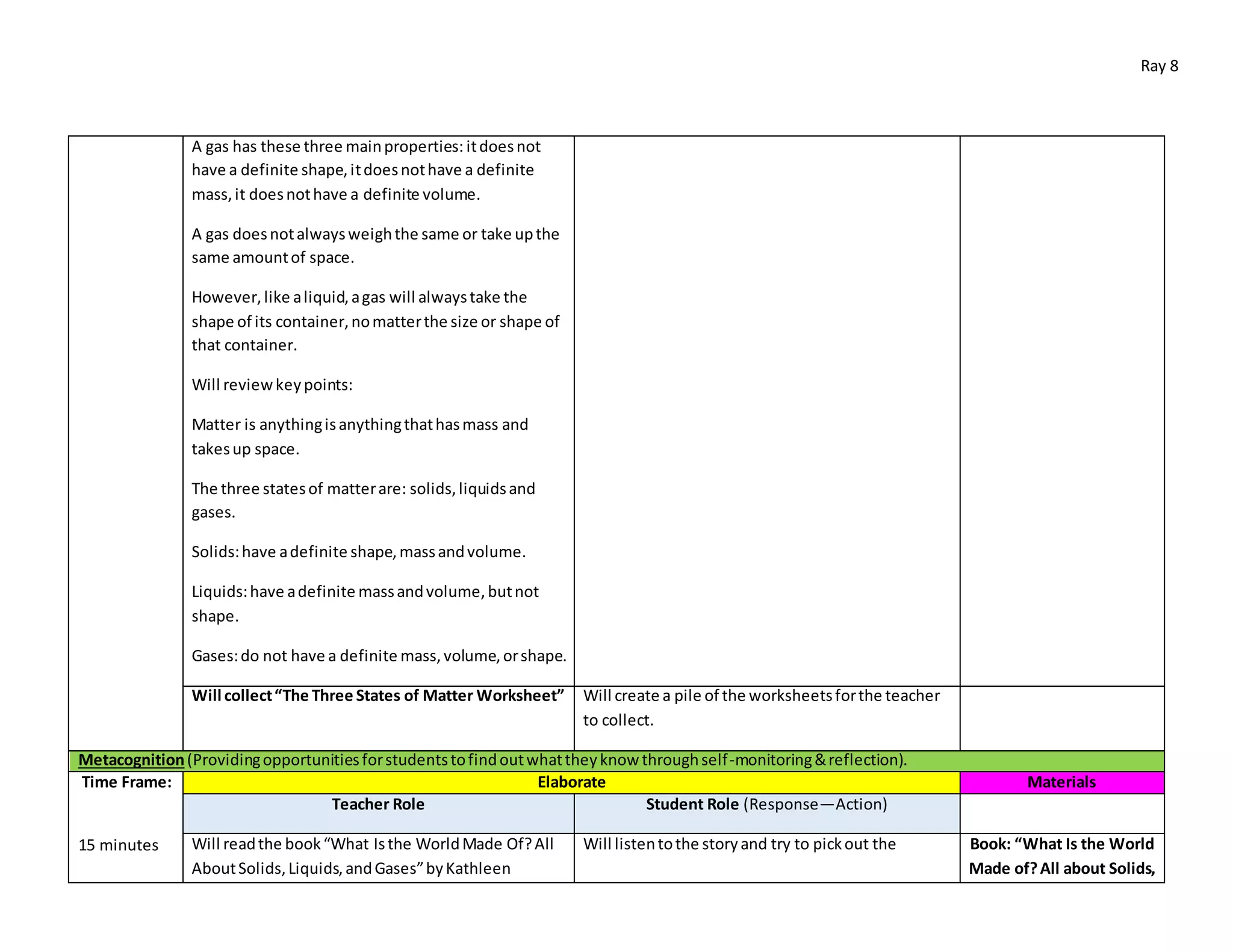Students in a 3rd grade class participated in hands-on activities and discussions to learn about the three states of matter - solids, liquids, and gases. They classified objects from a "NASA mission" as solids, liquids, or gases based on their properties. The teacher reinforced the concepts by reading a story and having students take guided notes. Students demonstrated their understanding of classifying materials and defining the key characteristics of the three states of matter.









